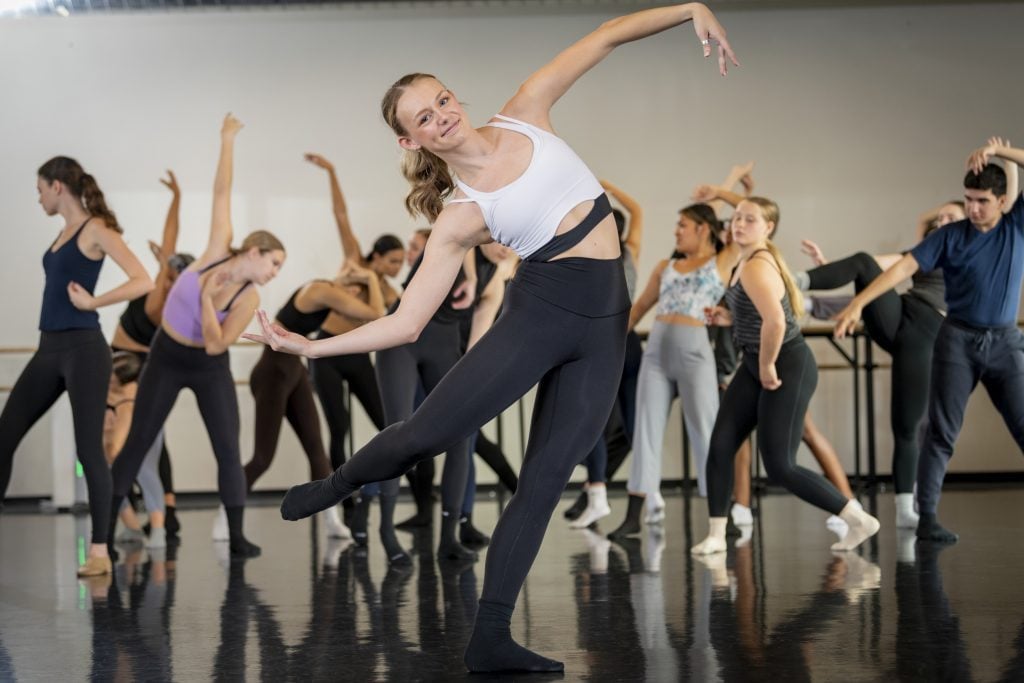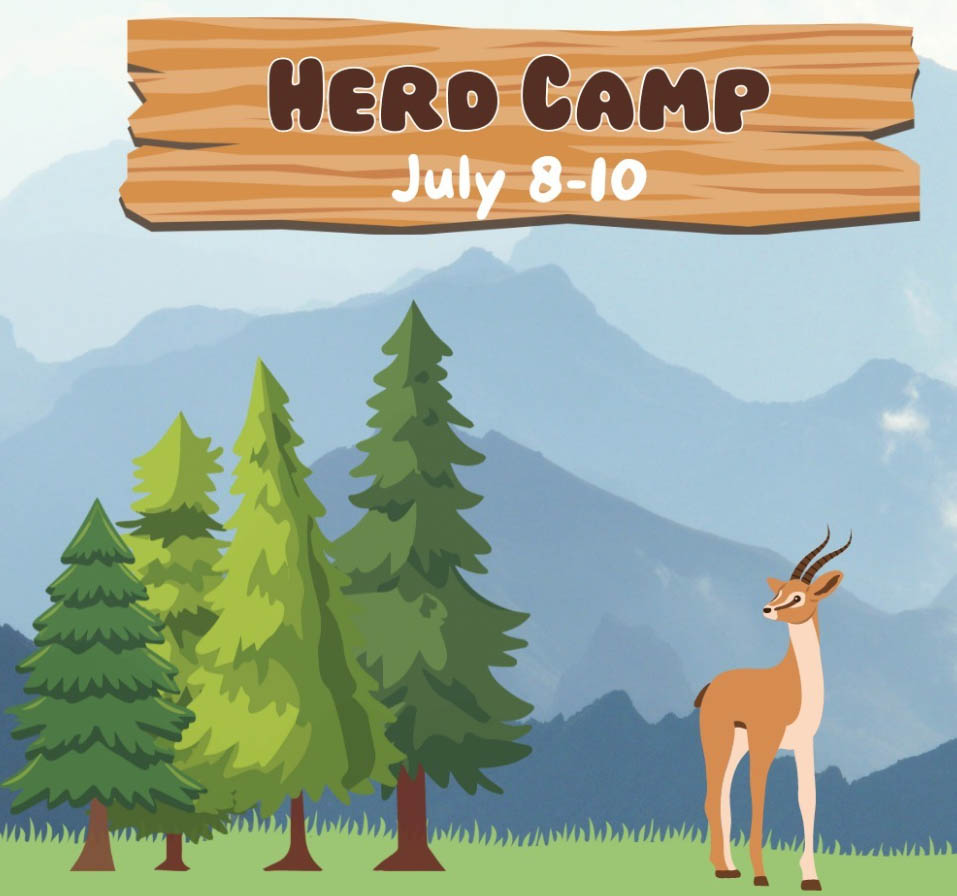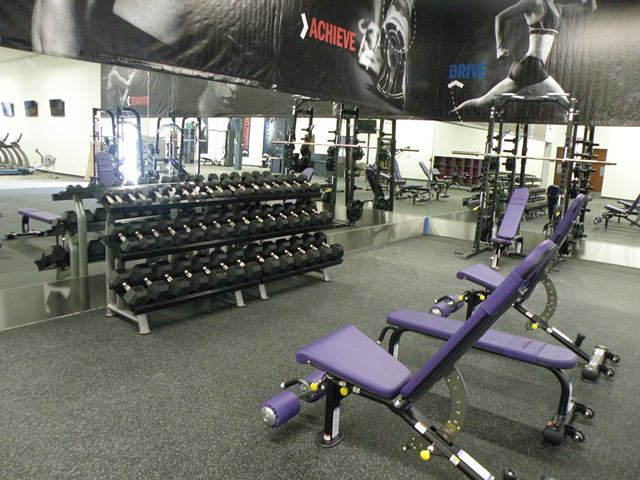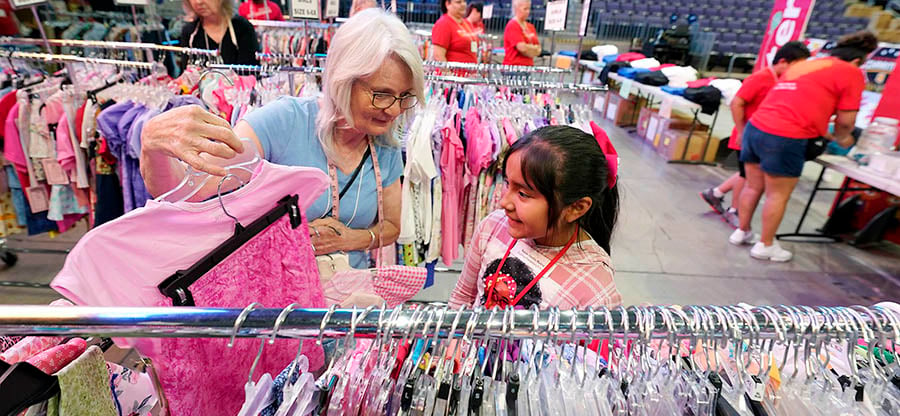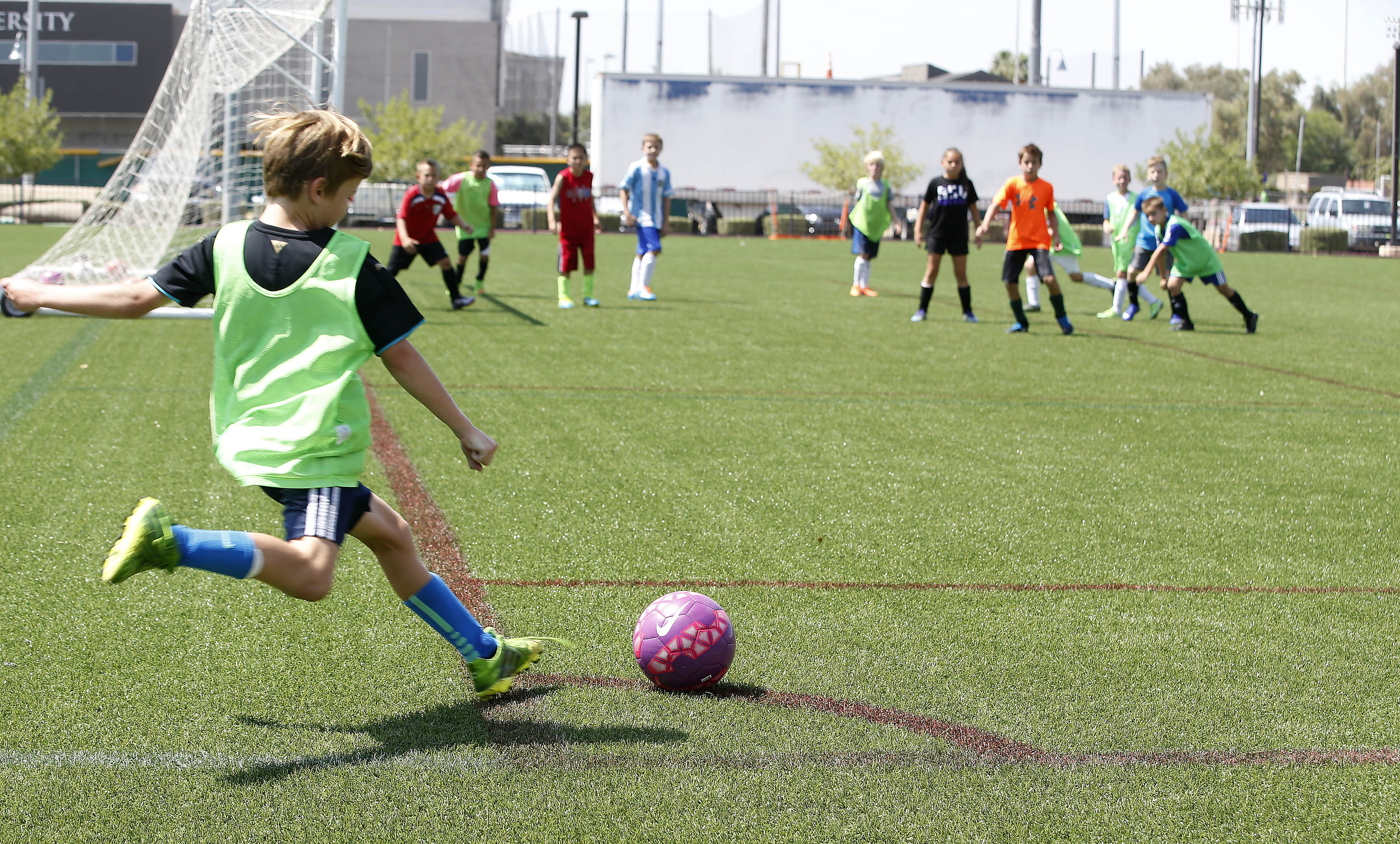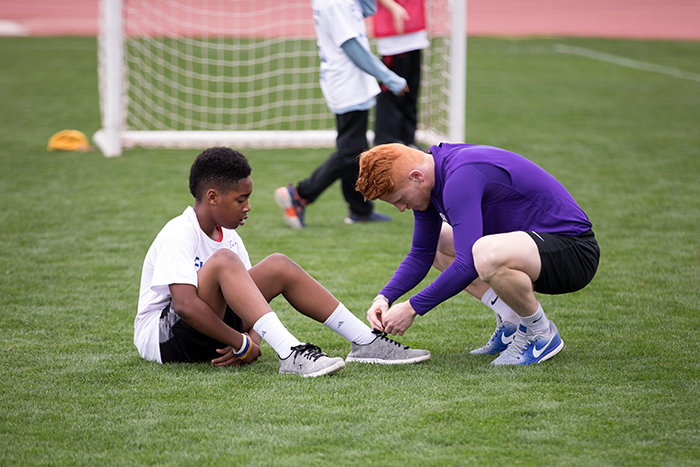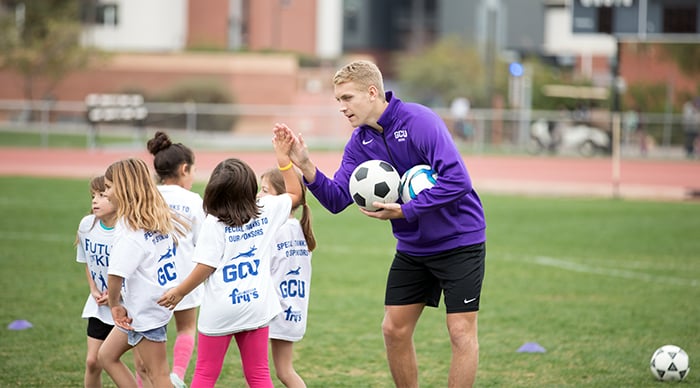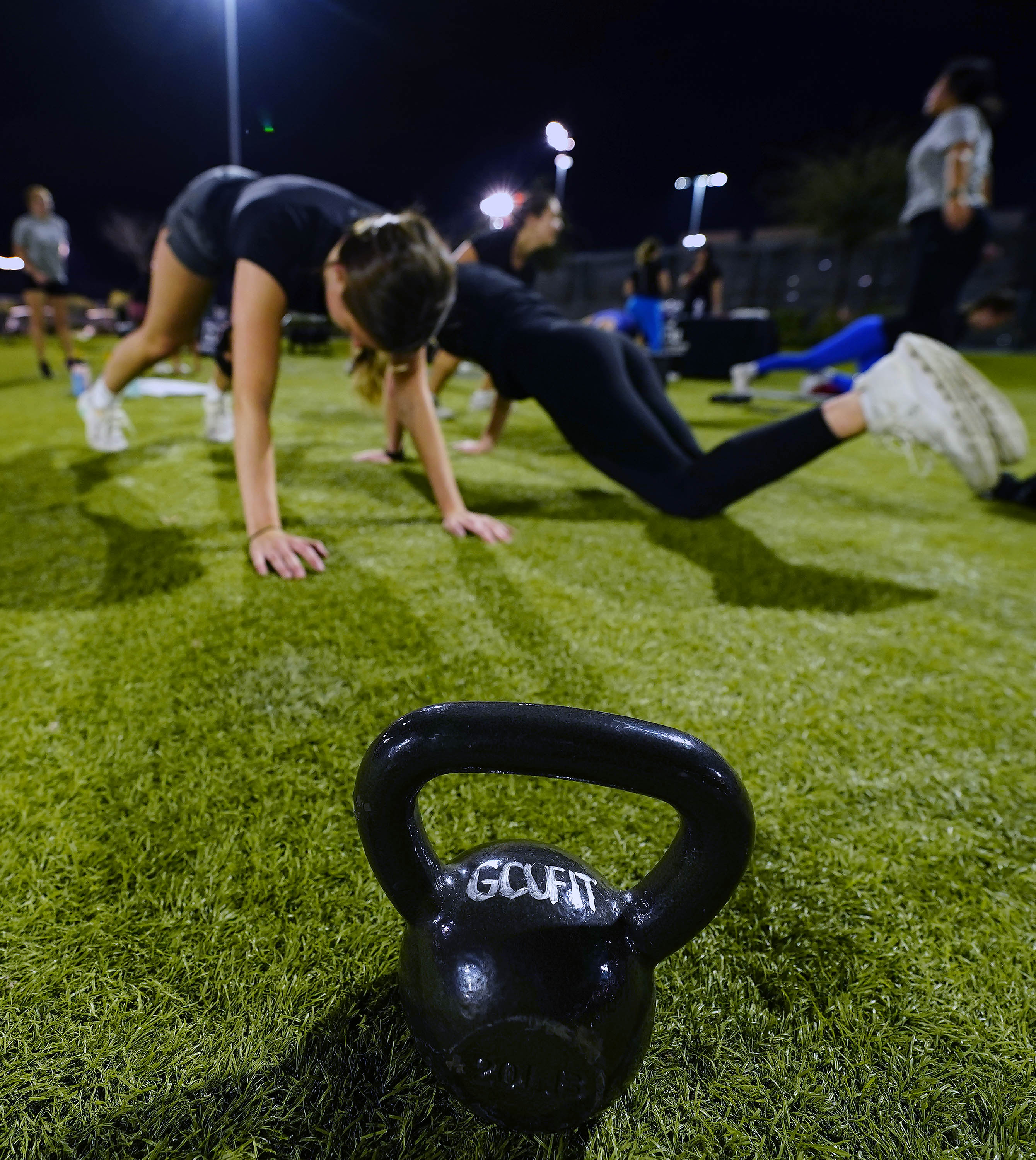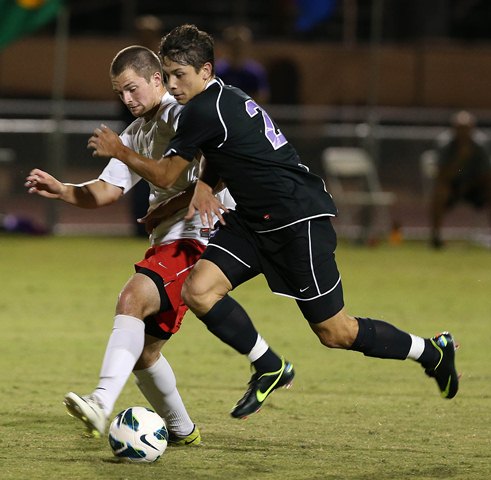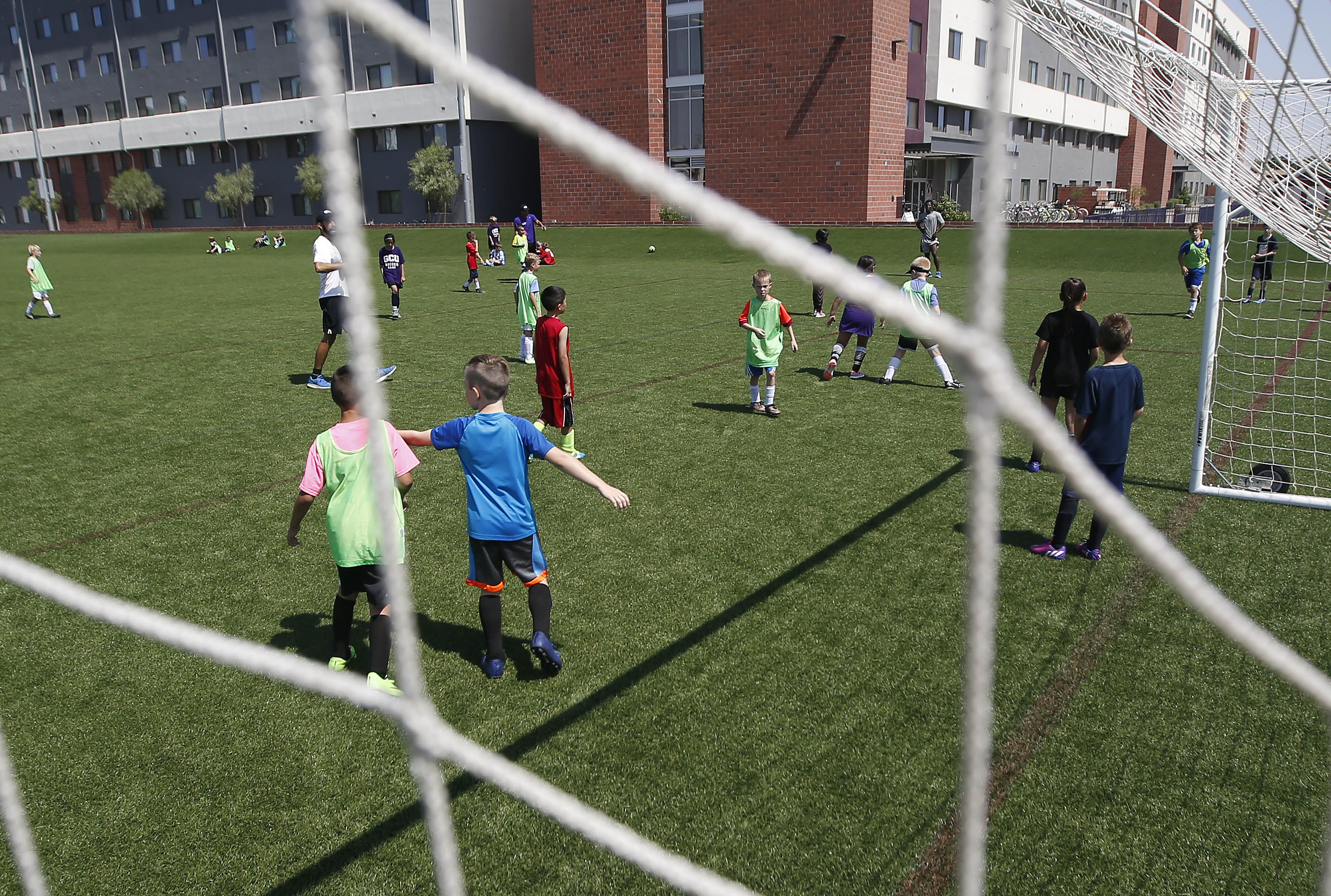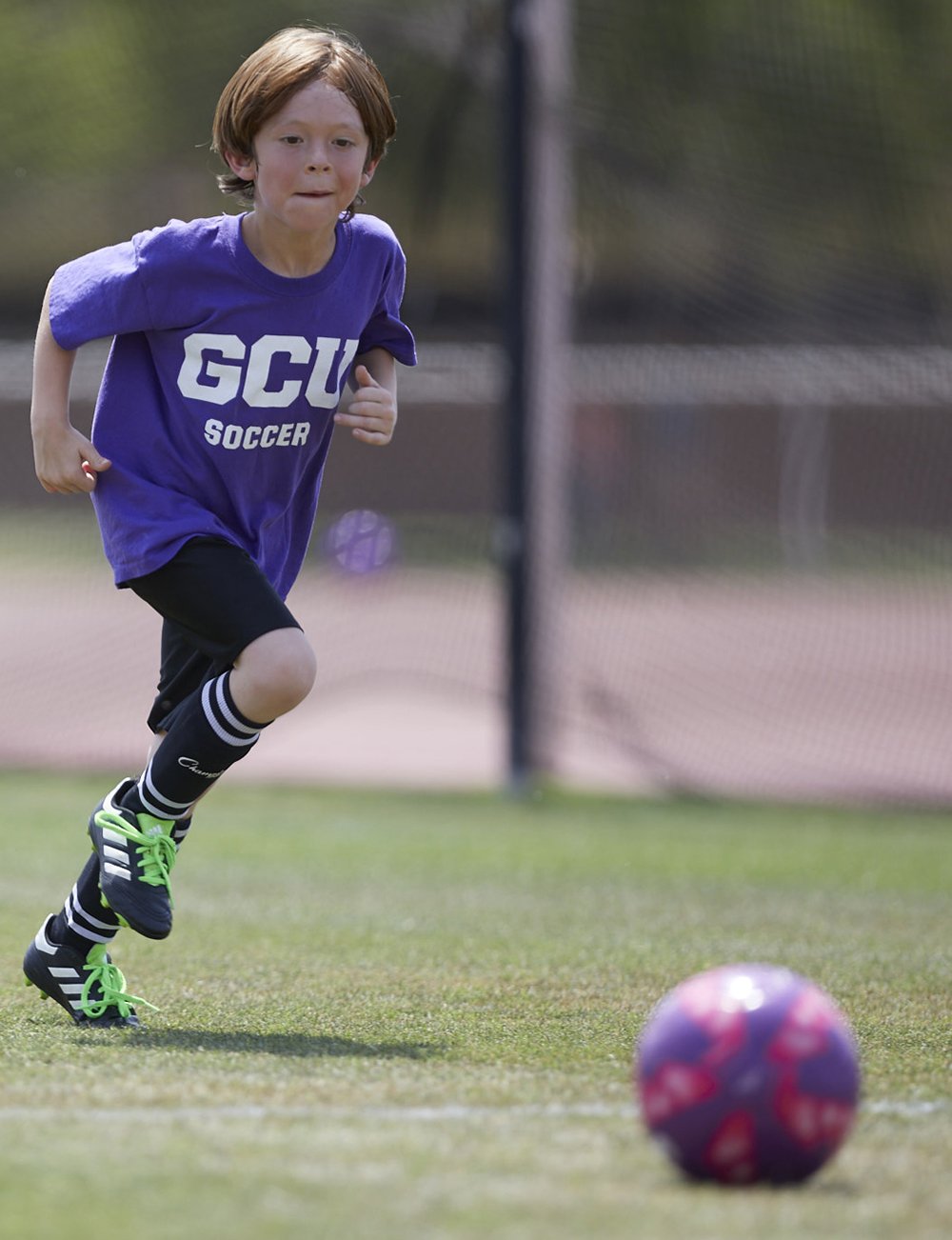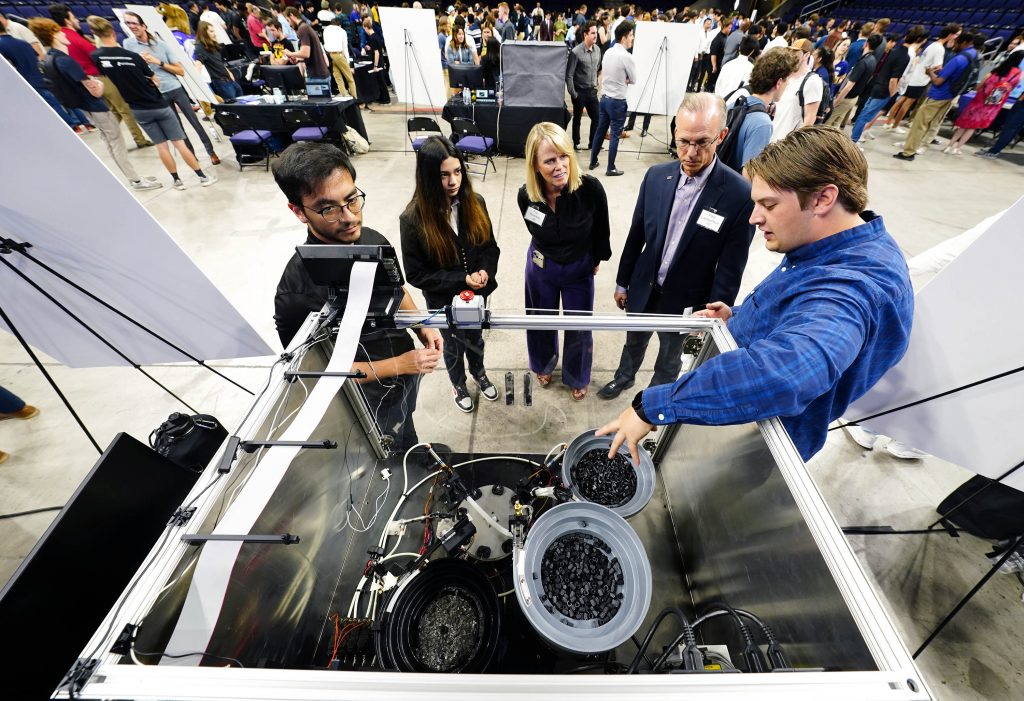
Photos by Ralph Freso
Watching videos on social media, Grand Canyon University biomedical engineering senior Karsten Brandsma saw rock climbers getting injured. But the most common injury isn’t what people might think.
It isn’t an injury from a fall but to a climber's fingers.
The hand includes five tendon pulleys, named A1 to A5, that act as connective tissue to keep flexor tendons attached to finger bones. When rock climbers put too much stress on their fingers, the tendon can pull away from the bone.
About 33% of rock climbing injuries involves a strain or tear of the A2 pulley in the finger.
“There’s NO WAY nobody’s solved this yet,” said Brandsma. "It seems like a simple solution."
He was one of the presenters at the College of Engineering and Technology's Senior Capstone Showcase on Thursday. The event, in which students display projects that mark the end of their academic careers as undergraduates, has grown so big that its almost 100 presentations spilled out of Global Credit Union Arena onto the Quad lawn.
Brandsma, a rapeller, and teammate Andre Stablein, along with the group’s rock climbers, Noah Suwyn and Jose Vazquez, spoke to showcase guests about the pulley brace they engineered to fix the problem.
Most rock climbers, Brandsma said, use tape to support their fingers while they climb, but there’s no evidence that works.

His team’s pulley brace – a small but mighty device that looks like a ring with a tab to tighten it – can help a climber’s fingers withstand 900 newtons of force (450 newtons can cause a tear).
The group is in the process of creating its own company centered around the pulley brace.
“We’re hoping to bring it to market this summer,” said Brandsma.
Samantha Russell, the college’s director of interdisciplinary engineering capstones, said what has impressed her the most about this year's showcase is how many of the students “took the initiative to involve industry into their projects.”
And she's impressed at how the students, like Brandsma and his team, are taking the initiative to become part of industry by creating their own companies.

Another team whose finger was on the pulse of innovation came up with a way to stymie porch pirates.
Mechanical engineering technology senior Seneca Joseph loved watching former NASA engineer and YouTuber Mark Rober get revenge on porch pirates in his viral videos by “glitter-bombing” them – putting fake packages on porches that explode with glitter once they’re opened.
Joseph thought, “What if we had an actual solution?” to prevent the crime.
So his team, which includes fellow mechanical engineering majors Kenneth Crowley, Mason Selby and Carla Martinez, created a porch locker.
According to the team’s research, 79% of Americans in 2022 were victims of porch package theft.
Their device uses a raspberry pi single-board computer and trunk lock actuator to open their porch locker once a barcode is scanned.
Similar package storage devices that are already on the market require delivery drivers to punch in a code, something that isn't always popular with drivers because of the time it takes to do so.
“Our competitors’ boxes are an eyesore to look at,” said Martinez, “and they hinder delivery drivers from doing their work.”
The team’s bench accommodates packages up to the 90th percentile in size and is aesthetically pleasing – it looks like a pretty, wooden porch bench and is designed to pass housing association standards. An escape latch on the inside assures that children who decide to use the box for hide-and-seek can get out.
The team also used eucalyptus wood, which can withstand the extreme Phoenix heat, in the bench design.
There’s more work to be done on the bench. For one, the team would love to create an app that will communicate with it, as well as an insulated compartment for food delivery.
“But it does what we intended it for. We’re very happy with it,” said Martinez.
One team of electrical and mechanical engineering students presented their fully automated system for assembling emitter/detector active devices.
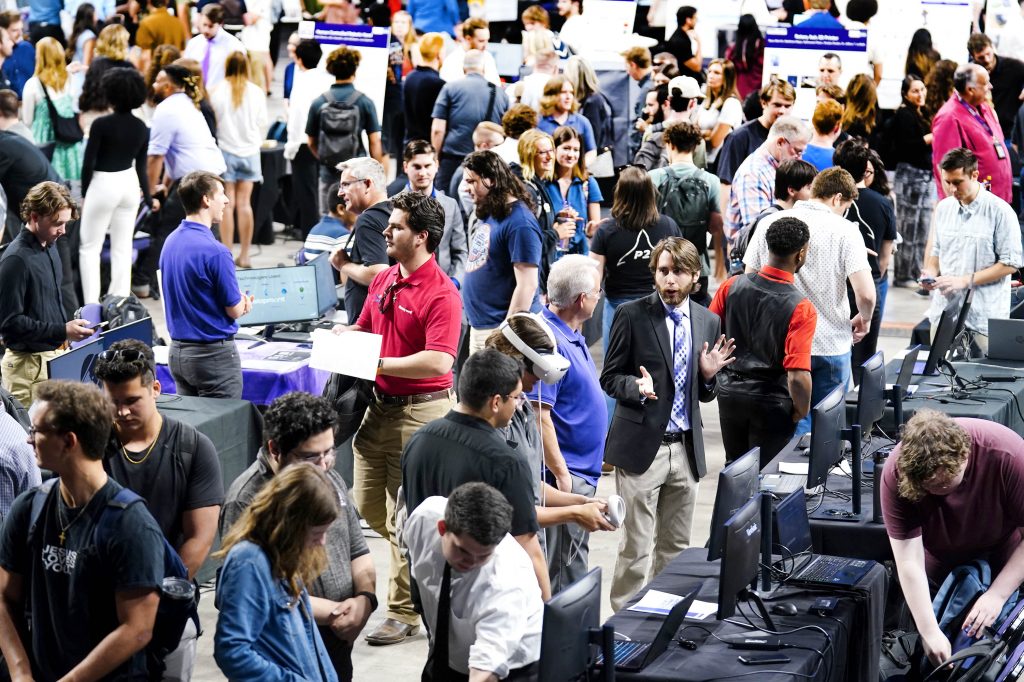
Senior electrical engineering major Jose Pacheco Sr. said the system is essentially an assembly machine. It takes three components – the housing, LED and nut – and assembles them into one device that emits and detects the light in fiber optic cables.
The team, which also includes mechanical engineering majors Javri Tangri and Zachary Geyer, partnered with Industrial Fiber Optics on the project to create the automated system.
The system is a phase 2 project started by a different team of students in a previous year. Pacheco, Tangri and Geyer started over on many elements and overcame challenges, such as how to get the LEDs to orient correctly.
“We just improved it a lot,” Tangri said.
Another team of students also worked on a project for a real client – GCU’s theatre department.
A theatre technical crew built a motorized, rotating platform to be used to create spectacle and theatre magic in performances, like the illusion of actors walking long distances across a short stage or, like in “Hamilton,” which uses a dual turntable to have two actors going in opposite directions.
“It’s been sitting in storage. Some of the components on it didn’t perform to consistent standards,” said Grant Schuler, one of a team of nine who worked on the project.
They met with theatre faculty and also visited Phoenix Celebrity Theatre, which has a rotating stage.

One of the problems the team solved was that the turntable was in two separate sections, a center circle and an outer ring. The team connected those sections to make it one piece and prevent slippage.
The students also stabilized the motor mount – in this case, a tire alongside the outer ring that powers the turntable. The system included an axle going from the drive shaft to the motor but had no support beams.
“The whole system would wobble and damage the coupling,” Schuler said, so the students added a bearing and attached it to a support bar for stability.
While Schuler’s team helped the theatre department create theatre magic, one group of IT and cybersecurity students spent the academic year working on their capstone, the Humanitarian Unified Assistance System (HUA). It’s a disaster case management communication platform designed to help nonprofits.
Izaiah Stroman, whose family is from Maui, was inspired to do something after the 2023 Maui wildfires and saw the problems of getting immediate help to families who needed it.
Stroman and his uncle saw the devastation of those fires and said, “We need to figure out a better way to make this recovery process faster and easier for the people,” said cybersecurity senior Trevor Hoke, who worked on HUA with Stroman, Dominic Cox and Caleb Klingseis.

HUA allows those affected by a disaster to submit a ticket, which populates a map in real time. The ticket details the family’s needs. Case managers can see that ticket and take that request, contact the families and deliver the supplies to them.
“It’s a very simple way for people to ask for supplies,” said Hoke.
Working on the project, added Cox, “It was a lot of work, a lot of meetings, but it was 200% worth it.”
“We’ve been working on it for eight months now,” said Stroman, who’s also the chief technical officer for Na Mea 'Ike 'Ia ("The Things Experienced"), a Maui-based nonprofit.
The group’s next step is to test the system in Maui.
“Our goal,” Hoke said, “is to scale it up. We want to be able to use this all over the world.”
Interdisciplinary Engineering Capstones Director Samantha Russell said as the showcase started to wind down, “The students’ dedication to their projects … and their passion has exceeded my expectations."
GCU Manager of Internal Communications Lana Sweeten-Shults can be reached at [email protected] or at 602-639-7901.
Related content:
GCU News: Students use AR, VR to plug in to helping those with neurodiversities
GCU News: Helping others centers College of Humanities and Social Sciences Showcase

